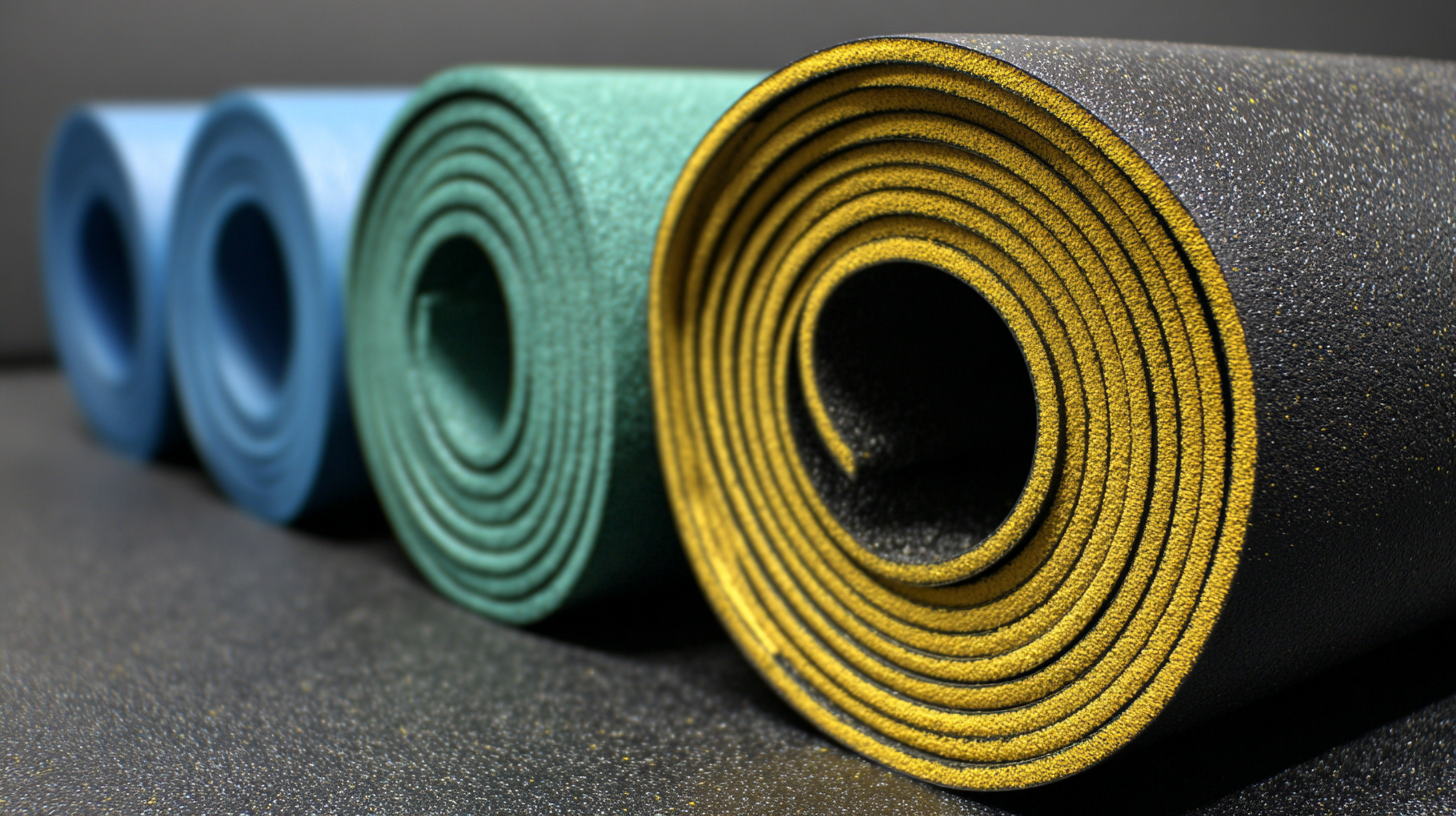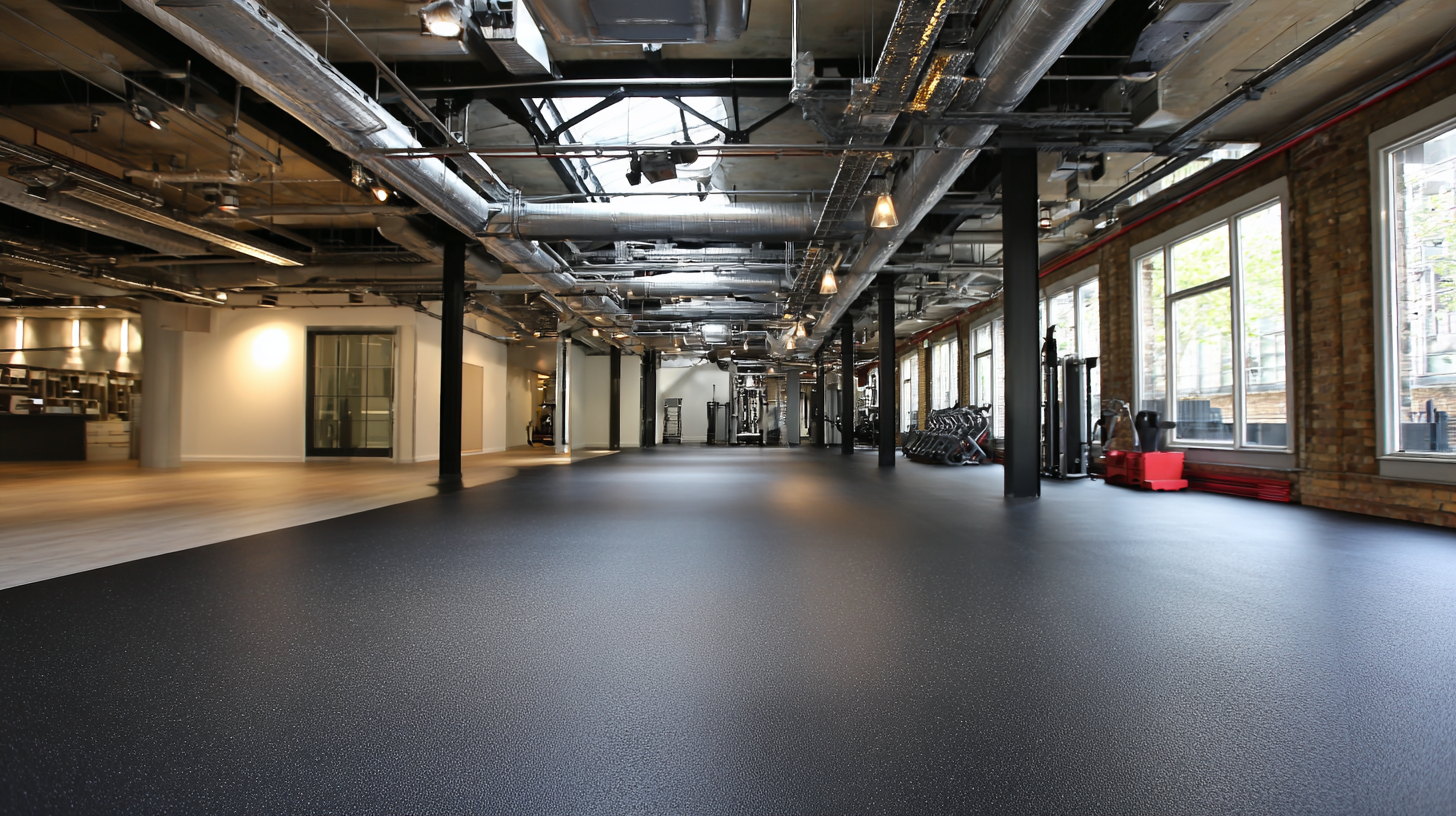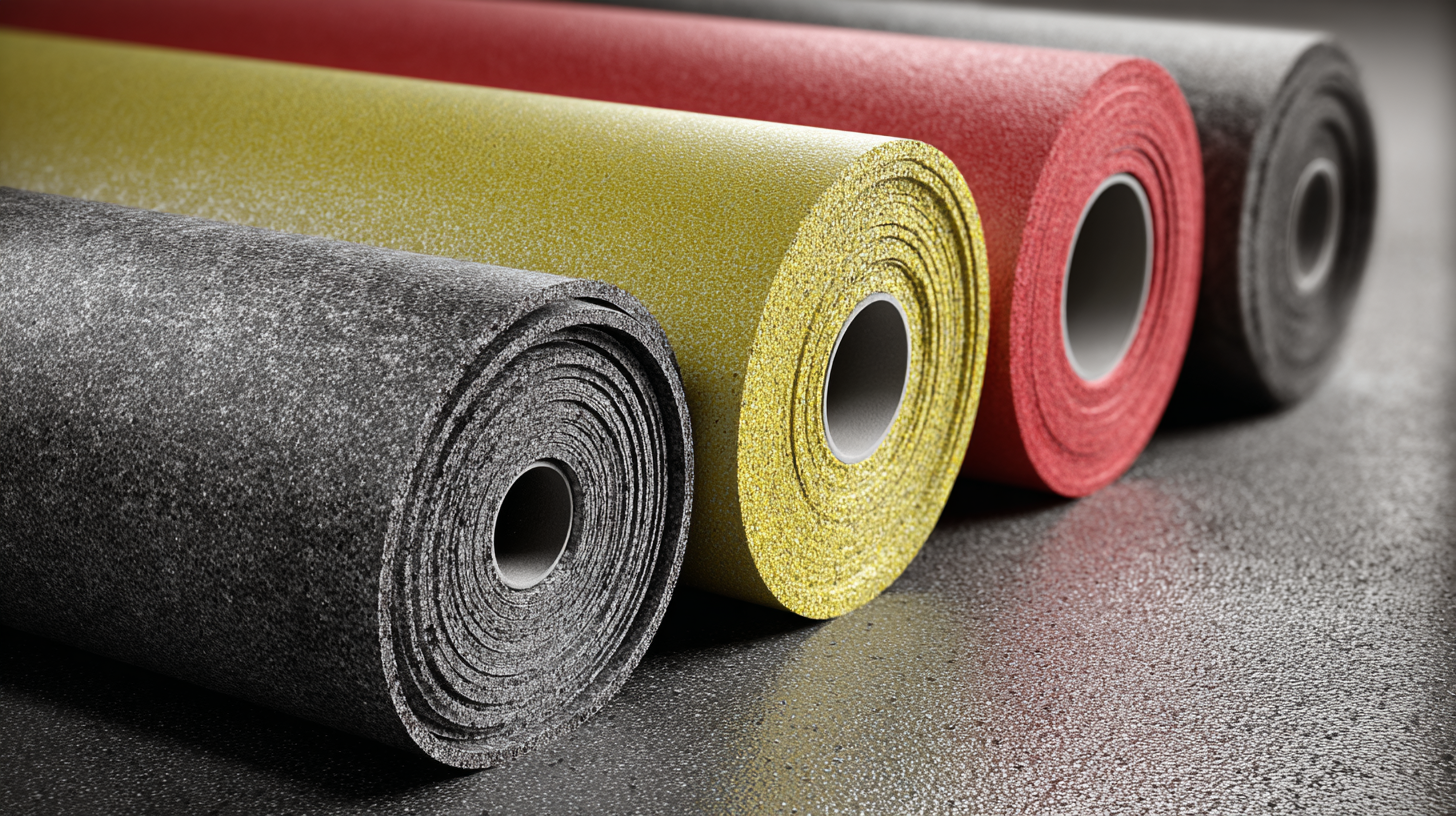
-
Home
-
About Us
-
Products
-
Solution
-
Accessories Service
-
Technicial Service
-
Additional Service
-
News
-
Blog
-
Contact Us
Leave Your Message

In recent years, the demand for durable and versatile flooring solutions in commercial spaces has surged, with EPDM Rubber Flooring emerging as a leading choice for numerous applications. According to a report by MarketsandMarkets, the global rubber flooring market is expected to reach $1.1 billion by 2025, with EPDM flooring accounting for a significant portion due to its unique properties, including excellent durability, slip resistance, and environmental sustainability.
 Furthermore, a study by Research and Markets indicates that the growing awareness of eco-friendly materials is driving businesses to invest in EPDM Rubber Flooring, which is often made from recycled materials and can contribute to LEED certification. However, choosing the right EPDM flooring can be daunting, given the variety of options available in terms of colors, textures, and installation methods. Understanding these factors is crucial for optimizing functionality and aesthetics in your commercial space.
Furthermore, a study by Research and Markets indicates that the growing awareness of eco-friendly materials is driving businesses to invest in EPDM Rubber Flooring, which is often made from recycled materials and can contribute to LEED certification. However, choosing the right EPDM flooring can be daunting, given the variety of options available in terms of colors, textures, and installation methods. Understanding these factors is crucial for optimizing functionality and aesthetics in your commercial space.
When selecting EPDM rubber flooring for commercial spaces, several key factors deserve attention. First, consider the intended use of the space. For instance, high-traffic areas require flooring that can withstand significant wear and tear. According to industry reports, EPDM rubber has excellent durability and can last up to 20 years in commercial environments, making it an ideal choice for locations such as gyms, schools, and retail stores.
Another critical aspect is the product's environmental impact. Many manufacturers now offer recycled options, which can contribute to sustainability goals. Recent innovations in the market, such as products made from recycled materials, not only provide functionality but also minimize carbon footprints. Studies indicate that using recycled rubber can reduce overall waste sent to landfills by up to 20%, aligning with growing corporate responsibility trends.
Furthermore, aesthetics should not be overlooked. EPDM rubber flooring comes in various colors and patterns, allowing businesses to create visually appealing spaces that align with branding. Trends suggest that a well-designed commercial space can enhance customer experience and satisfaction, as flooring plays a crucial role in the overall ambiance. Therefore, when choosing EPDM rubber flooring, carefully evaluating these factors ensures a well-informed decision that meets both practical and aesthetic needs.
| Factor | Description | Importance Level (1-5) |
|---|---|---|
| Durability | Ability to withstand heavy foot traffic and impact. | 5 |
| Slip Resistance | Surface texture that prevents slips and falls. | 5 |
| Aesthetic Appeal | Appearance and variety of colors and designs. | 4 |
| Maintenance | Ease of cleaning and upkeep over time. | 4 |
| Cost | Initial and long-term investment considerations. | 3 |
| Environmental Impact | Sustainability and eco-friendliness of materials. | 4 |
| Sound Absorption | Ability to reduce noise levels in commercial spaces. | 3 |
When selecting EPDM rubber flooring for a commercial space, understanding the different types and thicknesses available is essential. EPDM, or ethylene propylene diene monomer, is a popular choice due to its durability and resistance to weather and chemicals. There are several types of EPDM flooring you can choose from, including solid and porous variants.
 Solid EPDM offers a non-porous surface that is excellent for high-traffic areas where spills and stains are a concern. In contrast, porous EPDM allows for water drainage, making it ideal for outdoor settings or areas exposed to moisture.
Solid EPDM offers a non-porous surface that is excellent for high-traffic areas where spills and stains are a concern. In contrast, porous EPDM allows for water drainage, making it ideal for outdoor settings or areas exposed to moisture.
Thickness is another critical factor in your selection process. EPDM rubber flooring typically ranges from 4mm to 15mm in thickness. Thicker options provide better shock absorption and are suitable for applications like gyms or playgrounds where impact resistance is crucial. However, thinner sheets may be preferable for indoor commercial spaces, where aesthetic appeal and ease of installation are key considerations. Ultimately, your choice should reflect the specific needs of your commercial environment while ensuring both functionality and safety for its users.
When selecting EPDM rubber flooring for a commercial space, evaluating its durability and maintenance requirements is crucial.
EPDM (Ethylene Propylene Diene Monomer) rubber is renowned for its exceptional resilience, making it suitable for high-traffic areas. A study from the International Rubber Study Group (IRSG) highlights that EPDM can endure wear and tear for over 20 years, even in demanding environments, thanks to its excellent tensile strength and resistance to extreme weather conditions.
This durability translates into lower replacement costs, proving it's a wise investment for commercial facilities.
In addition to longevity, maintenance requirements play a vital role in the flooring selection process. According to a report by Research and Markets, EPDM flooring requires minimal upkeep due to its non-porous nature, which resists stains and prevents the growth of mold and mildew. Routine cleaning with standard detergents is usually sufficient to keep the surface in good condition.
Moreover, EPDM's slip-resistant properties not only enhance safety but also contribute to lower maintenance costs over time, as fewer accidents result in reduced liabilities and injuries. These factors make EPDM rubber flooring an appealing choice for commercial spaces looking for both durability and ease of maintenance.
When selecting EPDM rubber flooring for a commercial space, the choice of color and texture plays a crucial role in enhancing the overall aesthetic and functionality of the environment.
 Colors can significantly influence the perception of a space; for instance, vibrant hues can energize an area, making it ideal for gyms or playrooms, while softer tones can create a calm and professional atmosphere, suitable for offices or healthcare facilities.
It’s essential to consider the brand identity and the emotions you wish to evoke in your guests or customers when choosing the color palette.
Colors can significantly influence the perception of a space; for instance, vibrant hues can energize an area, making it ideal for gyms or playrooms, while softer tones can create a calm and professional atmosphere, suitable for offices or healthcare facilities.
It’s essential to consider the brand identity and the emotions you wish to evoke in your guests or customers when choosing the color palette.
Texture is equally important, as it affects both visual appeal and practicality. A smoother surface may be easier to clean and maintain, making it perfect for high-traffic areas. Conversely, a textured finish can provide better slip resistance, which is vital for safety in environments like schools or hospitals. When combining color and texture, aim for harmony that aligns with the overall design concept of the commercial space, ensuring that the flooring not only meets functional requirements but also complements the surrounding decor and atmosphere.
When considering EPDM rubber flooring for your commercial space, analyzing the budget and installation costs is crucial. EPDM, known for its durability and versatility, can vary significantly in price depending on the thickness, color, and surface finish you choose. Generally, costs can range from $2 to $8 per square foot, but it's essential to factor in additional expenses like shipping and site preparation. A thorough budget analysis will help in aligning your flooring choices with your overall financial strategy.
Installation costs also play a vital role in the decision-making process. While some commercial spaces may opt for professional installation—which typically ranges from $1 to $5 per square foot—others might consider a DIY approach to cut costs. However, it’s important to weigh the potential risks of improper installation against the savings gained. Moreover, ensuring a level substrate and proper adhesive can greatly affect the longevity and performance of the flooring. Therefore, a detailed assessment of both budget and installation options can lead to a more informed and financially sound decision regarding EPDM rubber flooring for your commercial environment.





